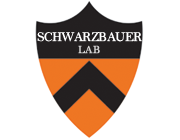Adenoviral-mediated expression and local deposition of recombinant tenascin-C perturbs cell-dependent matrix contraction.
Type
BACKGROUND: To mimic the wound environment, we have developed a three-dimensional (3-D) fibrin-fibronectin (FN) matrix model that is formed in vitro from purified proteins and approximates the provisional matrix. Tenascin-C, a large extracellular matrix (ECM) glycoprotein, is expressed transiently in tissue adjacent to areas of injury and contacts the provisional matrix in vivo. We have constructed a novel recombinant adenovirus vector (Ad-70Ten) to up-regulate local expression and secretion of a recombinant form of tenascin-C. METHODS: Ad-70Ten and a control vector were constructed and used to infect cultured mammalian cells. Post-infection monitoring of expression was accomplished by immunoblot and immunohistochemical techniques. Local protein deposition was examined by immunofluorescence. Cell contractility was assessed by ability of infected cells to contract 3-D fibrin-FN matrices. Some matrices also contained lysophosphatidic acid (LPA), an activator of Rho GTPase. RESULTS: Adenovirus-infected cells demonstrated high recombinant tenascin-C expression and deposited protein at sites of cell-matrix contacts resulting in significantly reduced contractility with 2.5-fold lower contraction of the matrix compared with control cells. Matrix contraction could be restored by treatment with LPA. CONCLUSION: These results show that endogenous expression of tenascin-C down-regulates cell contractility and strongly suggest that it exerts its effects via a Rho GTPase signaling pathway. Taken with previous findings, these results suggest that tenascin-C acts in both a paracrine and autocrine manner via Rho GTPase pathways. This report demonstrates that recombinant adenovirus infection is a feasible method to induce high expression of large matrix proteins in mammalian cells, allowing better approximation of in vivo circumstances for investigations of locally secreted matrix protein. While the current vector has been constructed for research purposes, it also represents a proof in principle that adenoviral vectors encoding large proteins may have potential benefit in clinical applications.

